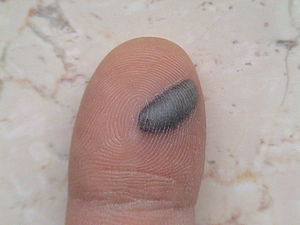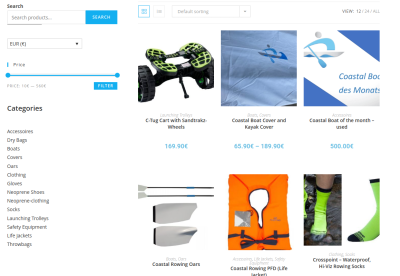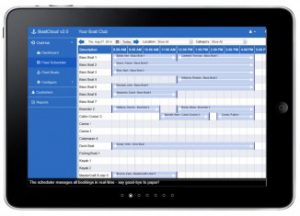Image via Wikipedia
Rowing Blisters: Part 2
Rowers’ blisters are caused by either friction forming a water blister or pinching forming a blood blister. There’s something going on between your hands and the handle to give you blisters; we need to look first at what you’re holding and then at how you’re holding it to see how you’re wounding yourself.
A better handle on rowing?
Whatever your choice of handles – and gosh! aren’t there a lot to choose from – make sure they stay comfortable to hold.
Keep handles clean
Tacky handles and greasy handles will keep you changing your grip as you row; greasy handles will have you squeezing to hold on; other lumps will give your hands something to rub against:
- Wash the handles after every outing; use detergent to get rid of the grease and a sponge or cloth for the dirt and store them somewhere where they can dry easily
- Wash or wipe your hands after applying sunscreen
- Lay your blades down so that the handles are out of the mud, off the little bits of gravel and sand, away from the broken glass, not anywhere where the geese have been
Keep up with the maintenance
Any loose flaps, any holes, any splits, any rough seams, even a change in texture will provide a ridge for your hands to rub against:
- Check your handles regularly for loose material that can be glued or rough patches that can be sanded smooth.
- Replace any grips that have holes or splits
- Fill and smooth chips or if they’re big, replace the handle
Choose to suit
Size matters as does surface texture
- Choose between large or small diameter – how big are your hands?
- Choose between hard and soft materials – what matters more: durability or comfort?
- Choose between textured and smooth – how much grip do you like to have? How rough is your water?
Just as an example, I prefer to row sweep with a wooden handle. About once a fortnight I give it a good clean using sand soap and water and follow up with a wire brush. I brush, quite vigorously in small circles, like brushing your teeth, up and down the length of the handle and finish up with a slightly fluffy surface. This provides good grip and especially when the water’s rough and the handle wet.
What are your tips for keeping your handles in great shape?








This Post Has 3 Comments
love this article – will pass on to the Mums who ask us about blisters *all the time* !
looking forwards to the article on Rower’s Bum
Di, keep reading we have parts 2 and 3 still to come!
I met a surgeon who showed me how he tapes his hands because he cannot afford to damage them for work but he loves rowing too…. awesome skills with sticking plaster and very sharp surgical scissors!
We are thinking of turning it into an e-book as well. Do you think this will be a good idea?
That sounds a great idea.